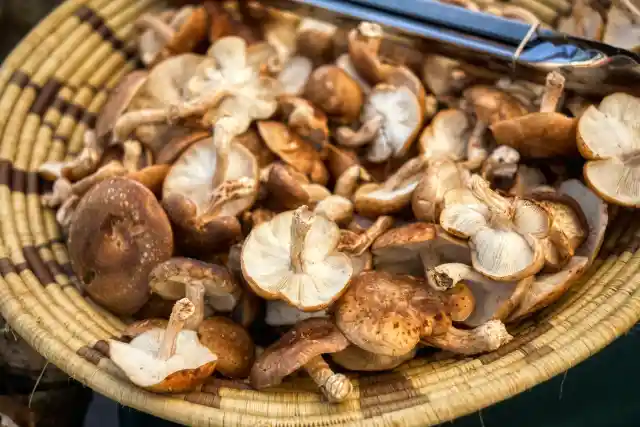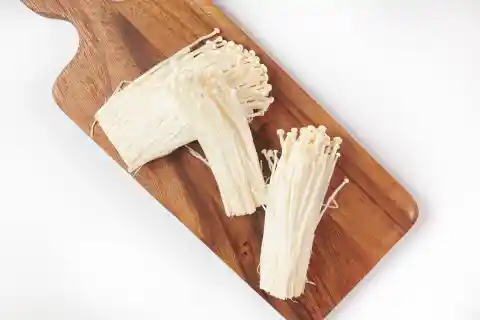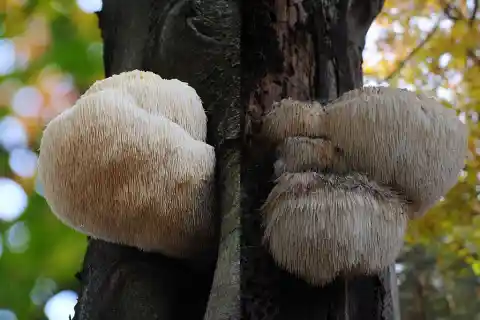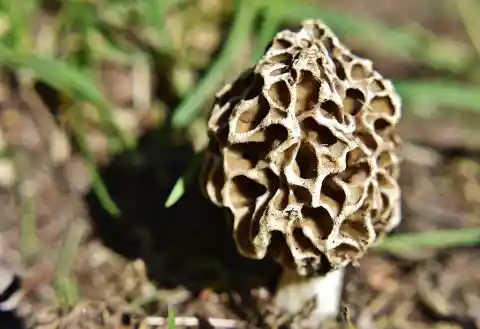Mushrooms: Versatile Ingredient
Last year, Mushrooms were named the "Ingredient of the year" and it doesn't seem like they are going to lose the title any time soon. These little fungi are always the perfect addition to any meal for literally everyone.


There is something for just about every person and palate, whether you prefer the milder types like button mushrooms or want to experiment with something more interesting like a chanterelle mushroom or an oyster mushroom. Here's all you need to know about the most common varieties of mushrooms and how to serve them.
Shitake
Shiitake mushrooms are native to East Asia and have a deep, meaty taste. They have an umbrella-shaped brown head with a small curl under it. Fresh shiitakes have a subtle woodsy flavor and scent, whilst dried shiitakes have a stronger umami flavor.


Both fresh and dried shitake mushrooms can be used in cooking; however, dried shitake mushrooms are more often used. Shiitake mushrooms are low in calories and high in vitamins, minerals, and health-promoting substances that can help prevent cancer and inflammation and enhance your immune system.
Button
Button mushroom is most probably the most eaten and most known type of mushroom. You've undoubtedly seen it in the vegetable area of your local grocery store. They don't have a very strong flavor, but they're thus used for their texture.


They can be put uncooked in a salad, and a basic dish of lettuce would taste unique with their slightly chewy and rough texture. When sautéed or grilled, the taste deepens and becomes richer, making them ideal for sauces or as a side dish.
Chanterelle
Because of their vast availability and distinct scent, chanterelle mushrooms are popular among mushroom aficionados. Although the fungus only grows in the wild, it is so widely distributed that you can frequently find it at well-stocked supermarkets and farmers' markets.


Chanterelles go well with both sweet and savory dishes because of their milder scent. They can be candied, used in pastries, or included in drinks.
Maitake
Maitakes, another highly-liked mushroom among professionals, have a reputation for a tough texture that holds up well in cooking as well as a moist, beautiful musky scent. It is also known as hen-of-the-wood and has edges that are delicately feathered and resemble a head of cabbage.


The mushroom tastes great when combined with smoky flavors. It may be grilled, cold-smoked, or hot-smoked, and it works well in lengthy braises and other heartier dishes.
Oyster
Wild oyster mushrooms can be seen growing on tree trunks, but the majority of these pale, thin, fan-shaped mushrooms that you see in shops or on menus are probably farmed.


The name of these mushrooms comes from their typical broad, thin, oyster- or fan-shaped caps. The flavor is subtle and wonderful; some have compared it to shellfish.
Enoki
The long-stemmed enoki mushroom is a prominent element in Asian cuisine. You can readily get these delicious strings-shaped mushrooms in most supermarkets. This mushroom has a delightful crunch from the tiny threads and a delicate, savory flavor. It is occasionally sold in clusters.


These mushrooms go great with many of different cuisines! For a delightful crunch, you may add them uncooked to ramen, sauté them, or include them into savory pancake and noodle dishes.
Porcini
Porcini mushrooms are typically available dried, although they can also be purchased fresh. They give soups, stocks, and other dishes a ton of concentrated mushroom taste.


These mouthwatering fungi are appreciated for their velvety texture, flavorful, woodsy aroma, and strong stem. They are said to be a highly popular gourmet mushroom due to their strong, almost creamy, nutty flavor.
Crimini
Compared to white mushrooms, cremini mushrooms have a meatier texture, making them ideal for soups and stews where they can handle liquids better.


These brown varieties are typically more expensive since they have a richer, more prized taste than their white counterparts. These mushrooms are also incredibly adaptable, they can go into almost any dish that calls for mushrooms.
Portobello
Portobellos are a strong replacement for meat or even bread. Portobello mushrooms are huge, around the size of your hand's palm. They have a meaty texture and can be grilled, roasted, or sautéed to create a savory and satisfying meal.


Additionally, portobello mushrooms are low in calories and high in nutrients such as potassium, fiber, and antioxidants. You can grill them or load them with cheese. They are very well-liked in Italy, where they are either grilled to serve on their own or used in sauces.
Lion's Mane
Lion's mane mushrooms are known for their seafood-like flavor, reminiscent of lobster or crab. Traditional uses for lion's mane include supporting memory and cognitive function. It is good for digestive system.


This mushroom stimulates the synthesis of nerve growth factors and provides nutrition for the brain. As a substitute for white fish, this mushroom can go fairly much anywhere because of its texture in particular.
Morel
The morel is one of the most valued edible mushrooms in the world, and it has a distinctive honeycomb-shaped crown. As morel mushrooms are difficult to grow, the majority of them that are served in restaurants are foraged in the spring, resulting in a multi-million dollar industry.


Its robust flavor enhances a variety of recipes, and they are usually served with meats or filled within ravioli. This particular kind of mushroom must be cooked in order to remove any poisons that are present when consumed fresh.
Black Trumpet
These black-gray mushrooms, which are also a favorite among chefs and are named for their funnel-shaped appearance, are less common in supermarkets but can be spotted in the wild and at farmers' markets.


Black trumpets, which are related to chanterelles and eaten both fresh and dried, have a strong, smokey flavor that some liken to that of black truffle mushrooms. Black trumpets are "the" mushroom used in risotto. Be aware that black trumpet mushrooms require extensive cleaning since they are very dirty.